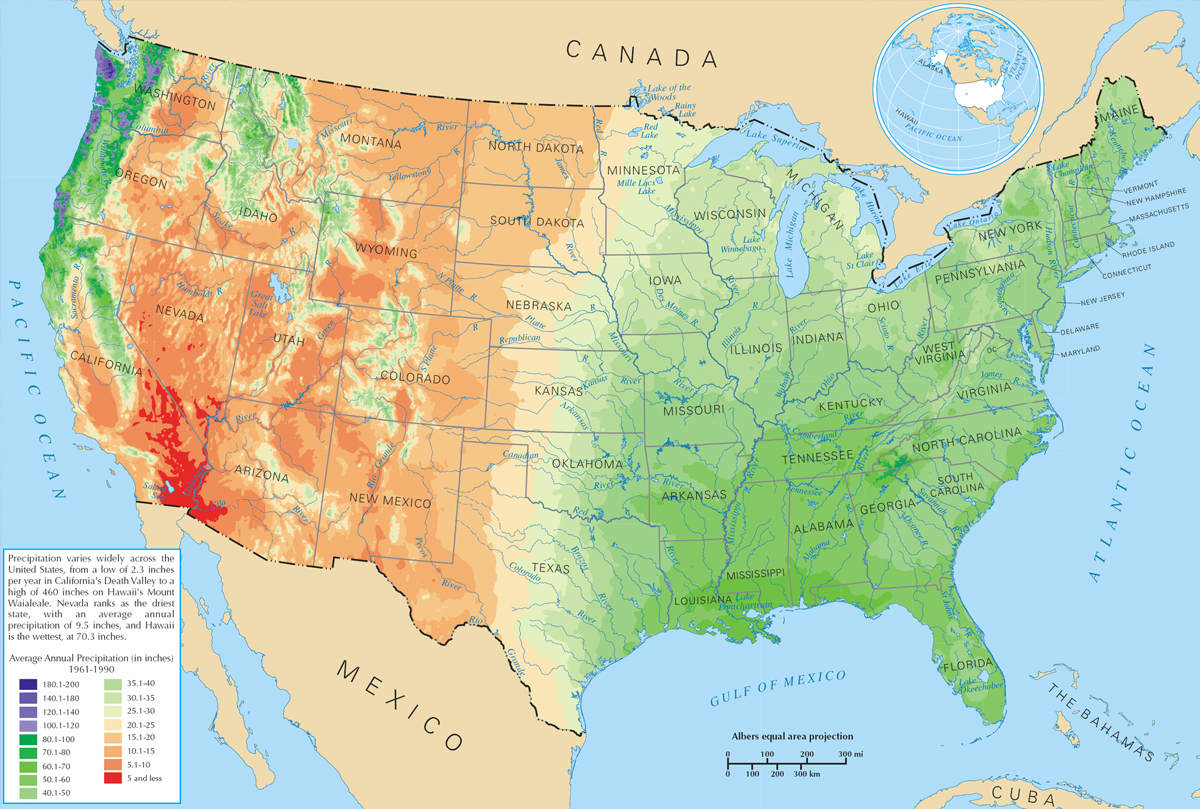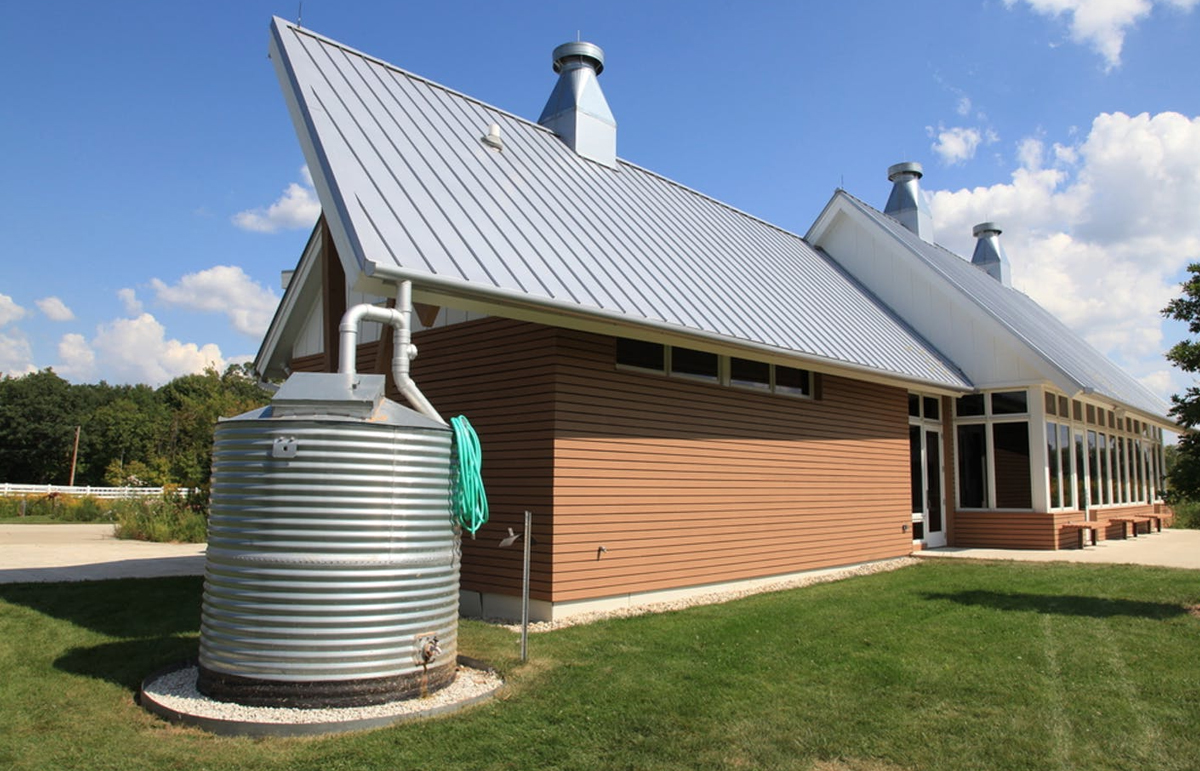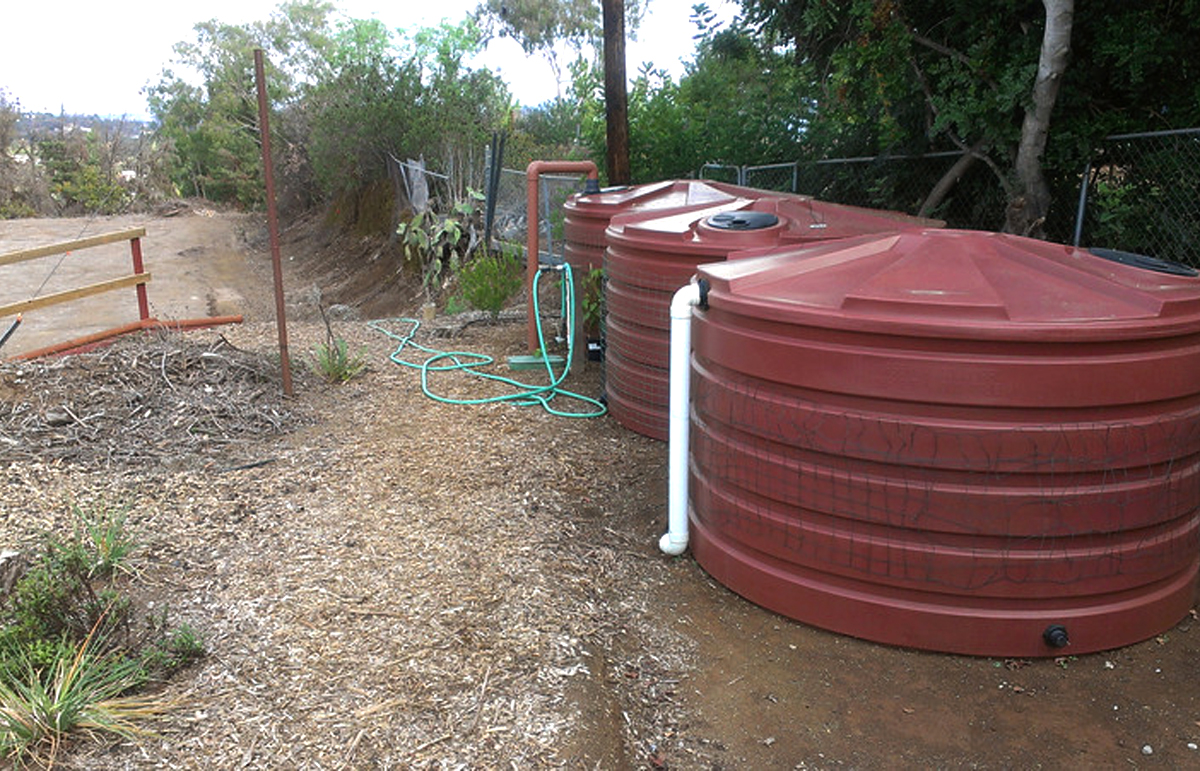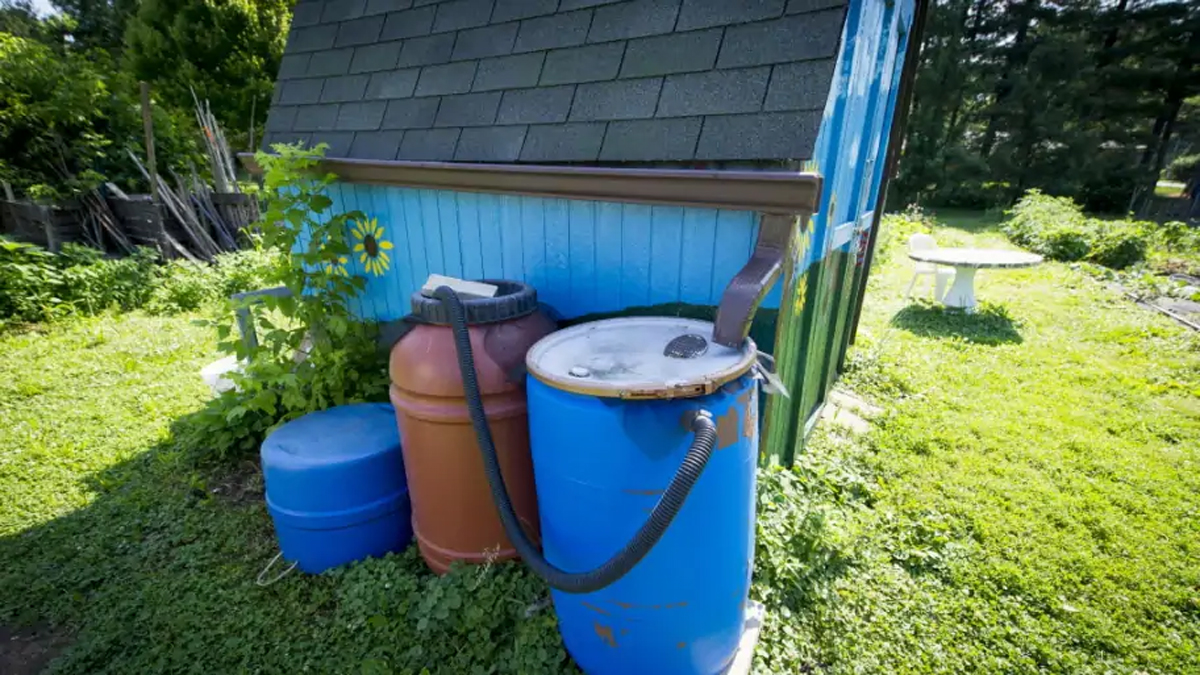on
Rainwater harvesting is collecting the run-off from a structure or other impervious surface in order to store it for later use. Traditionally, this involves harvesting the rain from a roof. The rain will collect in gutters that channel the water into downspouts and then into some sort of storage vessel.
Rainwater collection systems can be as simple as collecting rain in a rain barrel or as elaborate as harvesting rainwater into large cisterns to supply your entire household demand.
The idea of rainwater harvesting often conjures up images of an old farm cistern or thoughts of developing countries. The reality is that rainwater harvesting is becoming a viable alternative for supplying our households and businesses with water.
Before starting this project be sure you have researched your state laws, to make sure there aren’t any restrictions. Colorado basically bans it, and other states may have restrictions as well.
How to calculate rain collection
The amount of rainfall that you can collect is governed by the following formula: 1″ of rain x 1 sq. ft. = 0.623 gallons. An even simpler way to calculate your rain collection capabilities is this formula: 1″ of rainfall over 1,000 square foot roof will yield 623 gallons.

If you want to figure out how much rainwater you could potentially collect in a year you need to start by finding out what your areas annual rainfall is, and then figure out how many square feet of roof you intend to collect the water from. Acceptable roofing materials for catchment systems include aluminum, tiles, and slate or galvanized corrugated iron. And you could have collection systems set up on your home, barn, shop or any other outbuilding.
What Are The Different Methods To Collect Rainwater?
The only thing that differs in the following methods is the scale of the system. They all follow the same principles but differ on aesthetics and actual water conservation effectiveness.
RAIN BARRELS
This method is the most common and one that many people are familiar with. This involves installing a barrel at a gutter downspout to collect rainwater. The actual barrel may be a recycled barrel or a new commercially available rain barrel.

Pros: Easily implemented by anyone at any residence. Barrels are readily available in your community or at various stores & websites, Barrels don’t take up much space so they can fit into any situation
Cons: Capacity is generally only 50 to 100 gallons Easily overflows and wastes collection opportunities
“DRY” SYSTEM
This method is a variation of a rain barrel set-up, but it involves a larger storage volume. Essentially, the collection pipe “drys” after each rain event since it empties directly into the top of the tank.
Pros: Can store a large amount of rainwater. Great for climates where rainfall happens with infrequent, larger storm events. Can be inexpensive to implement. Less complicated system so maintenance is easier
Cons: The storage tank is quite large and must be located next to your house
“WET” SYSTEM
This method involves locating the collection pipes underground in order to connect multiple downspouts from different gutters. The rainwater will fill the underground piping and the water will rise in the vertical pipes until it spills into the tank. The downspouts and underground collection piping must have water-tight connections. The elevation of the tank inlet must be below the lowest gutter on the house.

Pros: The ability to collect from your entire collection surface. The ability to collect from multiple gutters and downspouts. The tank can be located away from your house.
Cons: More expensive to implement due to underground piping. Sufficient difference between gutters and tank inlet must be available.
Turning rainwater into potable water
Stored rainwater has similar bacterial load to a creek or stream in nature. So it needs to be treated before it can be safely used for drinking or cooking.
If you are planning on using rainwater catchment as your home’s sole source of water then you will need to have a pressurized system to get the water into your home and will most likely want to invest in a system that provides potable water to your entire home.
If you intend to use the rainwater for things like irrigating your garden your providing drinking water for livestock, and only as a backup in case of an emergency then a system such as the Alexapure Pro system can easily provide all the potable water you need for drinking and cooking for a family.
Having a water catchment in place, even if it is just a simple barrel or two connected to your downspouts can give you peace of mind knowing that you are not without options should the power go out – especially if you are on a well.
Get access to premium content and more!





